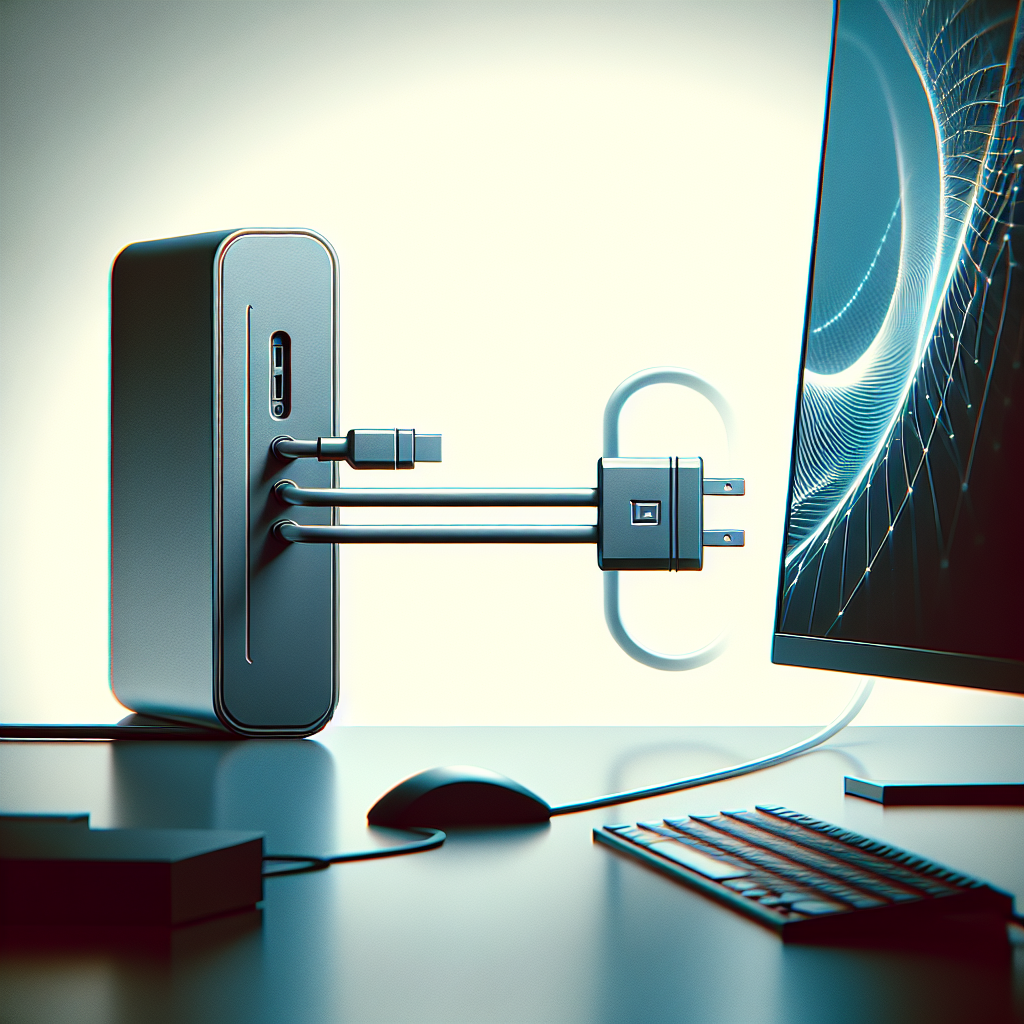Introduction
In today’s digital age, connecting a monitor to a computer has become an essential task for both personal and professional use. Whether you’re setting up a new monitor or troubleshooting an existing connection, understanding the different types of connection ports and cables is crucial. This article explores the various ways monitors connect to computers, helping you choose the best option for your needs.
Types of Connection Ports and Cables
Several types of ports and cables are used to connect monitors to computers. Each has its own advantages and disadvantages, and the choice depends on the specific requirements and capabilities of both the monitor and the computer.
| Connection Type | Advantages | Disadvantages |
|---|---|---|
| VGA | Widely Compatible, Cost-effective | Analog Signal, Lower Resolution |
| DVI | Higher Resolution than VGA, Digital Signal | Less Common on New Devices |
| HDMI | Supports Audio and Video, High Resolution | Shorter Cable Length Limitations |
| DisplayPort | High Resolution and Refresh Rates, Daisy Chaining | Not as Common as HDMI |
| USB-C | Power Delivery, High Data Transfer Rates | Compatibility Issues with Older Devices |
VGA (Video Graphics Array)
VGA is one of the oldest and most widely used types of connections for monitors. It transmits an analog signal, which can affect image quality when compared to digital connections. VGA is cost-effective and is often found on older monitors and computers.
DVI (Digital Visual Interface)
DVI provides a digital signal, resulting in better image quality than VGA. It comes in several formats, including DVI-A (analog), DVI-D (digital), and DVI-I (integrated, both analog and digital). However, DVI is becoming less common as newer technologies emerge.
HDMI (High-Definition Multimedia Interface)
HDMI is a popular connection type that supports both audio and video signals, making it ideal for multimedia usage. It offers high resolutions and is commonly used with modern computers, televisions, and gaming consoles. However, HDMI cables have shorter length limitations compared to some other connection types.
DisplayPort
DisplayPort is a versatile connection that supports high resolutions and refresh rates. It is particularly favored in professional environments and among gamers. DisplayPort cables can also support daisy chaining, allowing multiple monitors to be connected to a single port.
USB-C
USB-C is a modern connection type offering power delivery and high data transfer rates. It is compatible with video, data, and power transmission in a single cable, making it an excellent choice for laptops and portable devices. However, compatibility with older devices can be an issue.
Comparing Connection Types
Choosing the right connection type depends on your specific needs and the capabilities of your monitor and computer. Here’s a quick comparison:
- Cost: VGA and DVI are typically less expensive, while HDMI and USB-C can be pricier.
- Resolution: HDMI, DisplayPort, and USB-C support higher resolutions compared to VGA and DVI.
- Compatibility: VGA and DVI are more widely compatible with older devices, while HDMI and USB-C are more common on new devices.
- Additional Features: USB-C offers power delivery, and HDMI supports both audio and video signals.
Common Use Cases
Personal Computing
For personal computing, HDMI is often the best choice due to its versatility and support for both audio and video. USB-C is also increasingly popular for newer laptops.
Professional Workstations
Professional workstations may benefit from DisplayPort due to its high resolution and refresh rate capabilities. In environments requiring multiple monitors, daisy chaining with DisplayPort can be particularly advantageous.
Gaming
Gamers often prefer DisplayPort for its high refresh rate support, which is crucial for a smooth gaming experience. HDMI is also commonly used, especially for consoles.
Conclusion
Understanding the different ways to connect monitors to computers is essential for optimizing your display setup. Whether you need a high-resolution connection for professional work or a versatile option for personal use, there is a connection type that fits your needs. By considering factors like resolution, compatibility, and additional features, you can make an informed decision and ensure the best performance from your monitor and computer setup.

